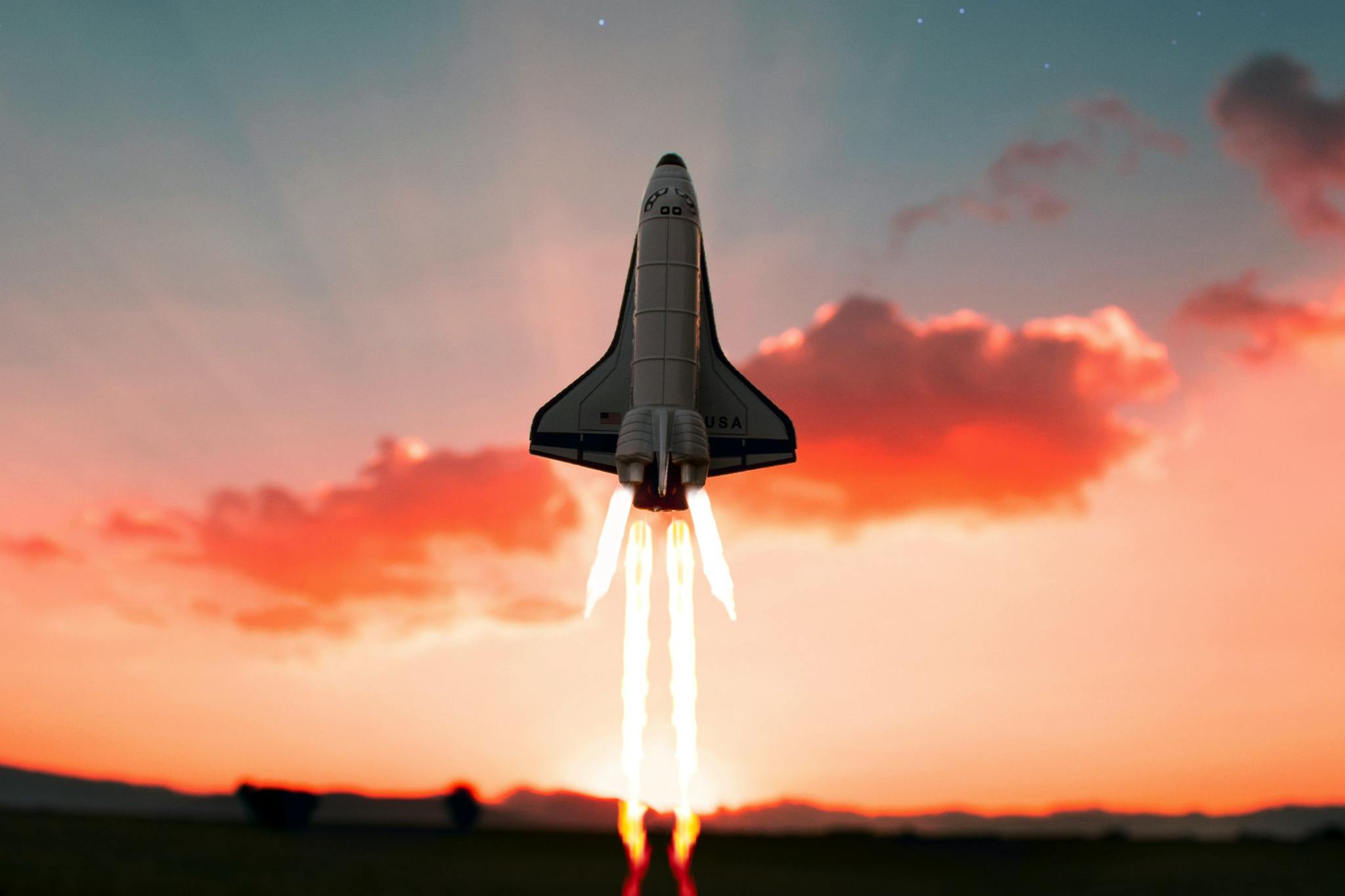In continuation of the topic raised in the last article, I decided to conduct a study of the space industry development based on the concept of “new space economy”.
The new space economy is a global trend based on a number of technological innovations and a certain business model. According to Morgan Stanley, this industry can already be valued at $350 billion and could reach $1 trillion by 2040. This opens up new opportunities for the automotive, tourism, energy, telecommunications, transportation, and other important industries to increase their profitability or improve the structure of work on Earth or in space.
My research
The main prerequisites for my research were:
- Strong growth of companies and new technological solutions in the space industry;
- Decreasing cost of transportation to Earth orbit;
- Growth in the number of spacecraft;
- The explosive growth of the space economy and its interrelationships with Earth-based industry and economy;
- Application of industrial and IT innovations to the space industry;
- Unpredictable revolutionary changes in economic models in the space-Earth nexus (black swans).
I have also identified the most promising technologies for the “new space economy” and these are:
- Spacecraft mass production;
- Serial production of ultra-light rockets for constellation replenishment and low-orbit launches;
- Heavy and super-heavy rockets for launching payloads into high orbits and launches to the Moon;
- High-power autonomous power supply systems (up to 500 kW);
- Laser communication and navigation systems for long-range communications;
- Autonomous satellites and rovers;
- New types of engines, including those that do not require reactive mass or significantly reduce its consumption, allow for constant operation both in low orbits and in space;
- New materials for various systems (protective, heat dissipating, etc);
- Electronic component base (including radiation-resistant) increasing computing performance in space (spacecraft, rovers, stations, and in the future on orbital data centers);
- New types of energy-efficient sensors and systems based on them;
- Technologies of autonomous production (robotization, additive technologies, AI, new materials processing technologies, etc.).
Based on this, I conclude the main trends of advanced development.
Main trends of advanced development for SpaceTech
So, here they are:
- Multifunctional autonomous heavy platforms and satellites with universal (typified) connectors and data exchange protocols. Unified standards for all satellites and bases for compatibility of various assemblies and designs. Development of the principles of modular construction of satellites (spacecraft) and stations (automated and manned) for space and satellite surfaces. This will provide the unification of technical solutions and the possibility of building complex technical systems without being tied to a country or a manufacturing company.
- A unified network of communication, navigation, and space traffic control based on AI. Creation of a unified system of space traffic dispatching in the Earth-Moon space with integration of all participants of space exploration programs. ExtraNet is a unified network of data collection, storage, and transmission in space. Extraterritorial principle of access to information, acceleration of data processing for space applications. Verified settlement system using blockchain technologies.
- Extraterritoriality of space law, new regulations, and legislation. Freedom of data exchange and settlement in space. Development of the ideology of humanity as a single nation. New principles of governance and cohabitation.
- Creation of a new space economy based on goods and services produced in space and their consumption in space. Multiple growth of interaction of Earth industry and economy with space industry and economy.
- New energy-efficient technologies and solutions adaptable for Earth applications. Biotechnology, new pharmaceuticals, biomaterials printing, photonic processors, superconductivity, magnetic levitation, automated factories and robotic mining systems, robotic shipyards using additive technologies (3D printing of structures and spacecraft in microgravity), autonomous rovers and harvesters.
- Achieving self-sustainability of space systems. Extraction of minerals and necessary resources for life support systems. Waste recycling technologies and self-sustaining closed ecosystems of bases and stations.
- Creation of new logistic chains. I mean Low orbits / high orbits / geostationary orbits / Lagrange points / Luna using autonomous satellites (tugs) with long operating times to reduce the cost of transportation. Using AI, creating a network of automatic stations for dispatching and traffic control to reduce accidents (avoiding the Kessler effect).
- New materials. Protection from radiation and space radiation, new alloys (produced in microgravity). Discovery of new chemical elements and compounds and creation of materials with their application.
- International Space University. Working with the “Big Challenges,” embodiment of the idea of “Mega Science” by taking science and research beyond jurisdictions, hosting on a platform with hosting space infrastructure allows for development trends on interdisciplinarity, openness, and digitalization. The use of an extraterritorial payment system will make it possible to obtain funding for research outside national institutions. Creation of new training systems for professionals and scientists for the industry through continuously updated digital training programs and practice with real cases.
- Synergetic revolutionary change of business models of the Earth economy. This will happen with the participation of the space economy. For example, industrial mining of platinum on asteroids will create an economically sound industry of hydrogen transport and hydrogen fuel cells for independent energy supply, which will remove electric transport and wind and solar energy. Another example is hydrocarbon extraction on the moons of Jupiter and Saturn, which will increase the Earth’s economy by 1000 times.
- Most importantly, we will see the expansion of mankind in the solar system and the expansion of the zone of life.
All this will allow us to create completely new technical systems and production directions, as well as significantly expand the capabilities of existing industries.
Possible directions of development for Space Tech
Let’s consider possible directions of development.
Creation of an infrastructure for access to energy supply anywhere in the solar system
For this project, all existing energy generation systems will be used, which will complement each other and give impetus to the technological development of autonomous energy supply systems (solar panels, nuclear technologies, energy storage systems). New solutions for wireless energy transmission in a vacuum.
Automated transportation networks
This includes Orbital and space tugs using new types of plasma and ion engines. Development and application of new types of fuels. Automated refueling, repair, and upgrade stations (GateWay’s). Dispatching of movement in near-Earth, near-lunar, and outer space using AI on the basis of orbital and space data centers. New chains and principles of logistics in high Earth orbit, near-lunar space, on the Moon and in the Solar System (Separation of transportation services by orbits and Earth-Moon paths).
Long-range communication and navigation networks
Laser communication systems and high-precision positioning systems. Positioning stations in space in 3-dimensional coordinate system (space and lunar navigation). Remote control of UAV drones by operators from Earth for complex tasks.
Space industry
Automated stations with customizable production cycle and standardized modules for equipment placement. Incorporating manufacturing facilities into new supply chains. 3D printing of space structures and spacecraft in microgravity using automated drones. Alloys and materials are produced only in microgravity. Technologies for creating self-sustaining ecosystems (waste management, water and air purification, food and medicine production). Cultivation of extremely pure and harmonized crystals.
Mining
Automated geological probes/automated and robotic mining systems. Base station with a power core, data center, and long-distance communication node+robotic drones for mining and primary processing of resources. Typical modules for automated and manned stations in space and on the surface of the Moon will also develop. Then, on the surfaces of satellites and asteroids. Rapid development of all planets and asteroids, with the construction of international settlements.
Space medicine
Creation of digital automated diagnostic complexes on the basis of historical datasets on changes in human condition in space, diagnostic techniques, and preventive methods with the application of AI. Development of treatment programs in microgravity conditions. Growing biomaterials in microgravity/bioprinting, operations in microgravity (automated robotic operating complexes, remote control of medical complexes).
Unified network of data collection, storage, and transmission outside the Earth
This includes Orbital data centers, data centers on the Moon, and space stations. Radiation-resistant electronic components. Photonic processors.
Conclusion
Recent events show that it is time for mankind to go out into the solar system and master it in full. Even already existing technologies are sufficient for the united expansion of mankind into space. Development of asteroids can significantly improve life on Earth (for example, obtaining platinum at the price of aluminum will revolutionize the entire transportation industry, replacing gasoline and diesel with hydrogen) and increase the size of the economy by thousands of times. Establishing full-fledged settlements on other planets and satellites will expand the range of human habitation. The creation of new materials, the development of medicine and pharmaceutics, and the development of new technologies in space will allow us to go further into other star systems.












